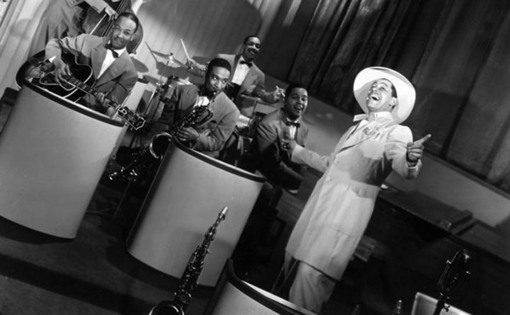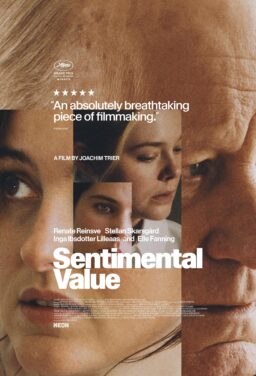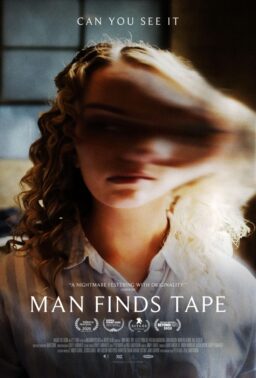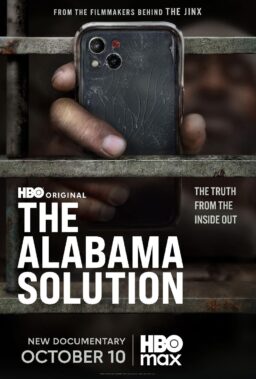“Cab Calloway: Sketches” premieres at 10 p.m. ET/PT Monday, February 27 on PBS’s “American Masters” (check local listings), and PBS on demand after that.

When I was 10, I snuck into my first R-rated movie and caught my first glimpse of Cab Calloway. Mind you, I’d heard him numerous times, as my folks had “Minnie the Moocher” on a 45. But much like the young audience who flocked to “The Blues Brothers” in 1980, I’d never actually seen him before. Until his musical number, Calloway looked like a nice old man. But once the strains of “Minnie the Moocher” started playing, he became something astonishing. He was hypnotic, dressed to the nines, with dreamlike movements and straight hair he shook like no Black person I knew. He was delivered to me the size Cab Calloway should always be delivered: On a big movie screen. I was in awe. 31 years later, I attended a midnight screening of “The Blues Brothers” at the IFC Center in New York City. Despite my familiarity with Calloway’s appearance and his other movies, I had the same reaction to seeing him on the big screen. That film remains the only time I’ve seen him in those dimensions, and he’d lost none of his allure.
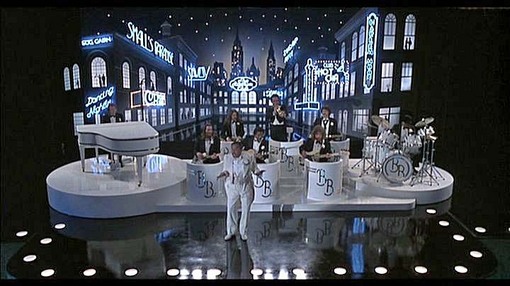
Calloway’s appearance in “The Blues Brothers” features in the final act of “Cab Calloway: Sketches,” Gail Levin’s documentary for PBS’s “American Masters.” Director John Landis and the Memphis musicians who made up the Blues Brothers band discuss their time with the self-proclaimed “Hi-De-Ho Man.” Steve Cropper, Donald “Duck” Dunn and Lou Marini speak of Calloway’s constant dapperness and the aura any living legend carries around. He told them stories, had a good time with the actors, and scared the hell out of his director during a recording session of the song Calloway pressed to vinyl in 1930. “Sketches” covers the origins of both Calloway and his leading lady, Minnie.

“Sketches” begins B.M., that is, before “Minnie the Moocher,” with Cab Calloway at the Savoy Ballroom in Harlem. The Savoy was where people went stompin’–it was the biggest Black dance club in town. They called it “The Land of Happy Feet.” If you played there, you’d arrived (at least to Black folks you had). Calloway appears with his band, the Alabamians, who, according to historian Gary Giddins, “had nothing to do with Alabama. ” Upon arrival, Cab and company got into a “Battle of the Bands” with Savoy favorites, The Missourians. “They got their asses beat, ” says Giddens, and Calloway, here in clips from an interview he conducted in his later years, seconds that notion. “But when the Missourians were looking for a new leader, they remembered me, ” says Calloway. His career immediately got a boost.

The most famous place to play in Harlem was The Cotton Club, a Mafia owned entertainment that allowed Black people on stage but not in the audience. Giddins and horn player Gerald Wilson discuss the irony of the Cotton Club being off limits to Harlem residents during the heyday of the Harlem Renaissance. Not that the Renaissance men and women minded so much. Langston Hughes, W.E. B.. DuBois and others were unsure about the current musical craze. “They were very ambivalent about jazz,” Giddins tells us, “because maybe it reminds them of aspects of the past that they don’t want to remember.” I thought this could have used more explanation, especially since music and art get lumped together when discussing this period.
The Cotton Club was White Only, but there were plenty of other places for Blacks to get their party on. Calloway narrates an animation of a map drawn by E. Sims Campbell that showed where all the hotspots were. Clubs like the “Yeah Man” were where one could dance and hear music. (The map has a guy outside saying “are we gonna go in there?!” The response is “Yeah Man!”) If you wanted to eat, there was Tillie’s Chicken Shack, which sounded cringe-worthy until I remembered that I love fried chicken, stereotype be damned. “And it was good chicken too,” says Cab.

Lest I forget, there was a drawing of the man Calloway sang about in one of his later songs, “The Reefer Man.” On the map, the Reefer Man stood waiting for customers. He sold joints for a price that would unbraid the cornrows in Snoop Dogg’s hair: two for twenty-five cents! “You try to get that price today, man,” says Calloway. (If you do, don’t smoke it.)
Speaking of songs about drugs, this leads us to “Minnie the Moocher,” a song whose colloquial lyrics made little sense to people today and even less sense to the White folks at the Cotton Club who had the privilege of hearing and seeing Calloway perform it live. Minnie’s origins came from Blanche Calloway, Cab’s older sister and a bandleader in her own right. She was the first Black woman to lead a band in the South, something the men in her band didn’t take too kindly to for the most part. Blanche and Cab took care of the family, with Blanche doing music and Cab doing odd jobs before he got hot. According to Cab’s daughter Camay Calloway Murphy, Blanche had a hit song called “Growlin’ Dan.” Minnie the Moocher makes her first appearance here, dreaming about the same King of Sweden Blanche’s younger brother would tell us about later. Blanche’s career with her band, The Joy Boys, eventually stalled, but her brother’s career took off.

Several talking heads in “Cab Calloway: Sketches” speak of the lyrical content of “Minnie the Moocher.” Basically, it’s a downer about a woman who went around begging for money. The song had references to cocaine and opium (“he showed her how to kick the gong around”), and things ended badly for Minnie. “Poor Min, Poor Min, Poor Min!” sings Calloway in Moocher’s famous last line. Such dark material didn’t prevent the song from being a big hit; its call-and-response scatting between Calloway and his audience practically guaranteed its success. It became the first #1 hit song by a Black artist, and Calloway milked it for all it was worth, making sequel after sequel to Minnie and continuing her story. The story got more and more outrageous and fun with each successive part, making “Minnie the Moocher” the precursor to R. Kelly’s “Trapped in the Closet” series, though at least Cab Calloway knew when to quit.

Calloway’s influence was felt in intriguing places. George Gershwin had Calloway in mind when he wrote the character Sportin’ Life in “Porgy and Bess. ” Calloway played the part in the 1952 tour, and “Sketches” gives us a too-short clip of him singing “It Ain’t Necessarily So.” Matthew Rushing, choreographer for Alvin Ailey, speaks of how Calloway’s movements found their way into the modern dance moves he and other trained dancers do. Steve Brodner, the artist who provides the literal sketch in the documentary’s title, is fascinated by what Calloway and other Black artists had to deal with in order to create their art. This fascination fuels his sketches. “They had to negotiate a racist media in order to perform their art,” he says as we see him working on his Cab Calloway painting.

Calloway’s use of the lingo of the day provided the precursor to what is affectionately called “Ebonics,” influencing rappers and hip-hoppers alike. “Sketches” mentions “The Hepster’s Dictionary,” a book Calloway published for the Negro-impaired so they too could speak jive like Barbara Billingsley. As he sings the accompanying song, definitions from this swing era Urban Dictionary fly across the screen.
Watch Cab Calloway’s Straight Hair on PBS. See more from American Masters.

And that hair! Calloway’s coif was the first recorded inspiration for Whippin’ One’s Hair. He tossed his straight hair around, and a million little Black boys like Sammy Davis Jr. wanted their hair to move like that. Stanley Crouch tells us, “The first thing any Black people learn about White people is that they love to throw their hair. You may not know anything else about them, but they love to do it.” Calloway threw his hair around not just in time with his sinewy, rooster-like movements; he flung it as a form of rebellion.

The talking head I found most interesting in “Cab Calloway: Sketches” is C. Calloway Brooks, a bandleader and Cab’s grandson. He talks about his grandfather’s scatting ability, which influenced numerous jazz musicians. Brooks says Cab’s voice was the instrument, and that “no player in his band who could get more jazz out of his instrument than Calloway could get out of his throat.” He also provides a long, technical description of how Calloway arranged his band, describing the role of each instrument section.
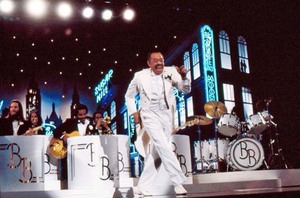
Arrangements lead us back to the end of “Cab Calloway: Sketches,” where we see John Landis in the recording studio laying down the track he’ll use for Cab’s number in “The Blues Brothers.” Landis expected Calloway to record the original arrangement of “Minnie,” but Calloway had his eye on sales of his new disco recording of the song, and wanted to record that version. The documentary gives us a snippet of Disco Minnie, and I shudder to think that musical period was kinder to Ethel Merman. When Landis requests the original arrangement, Calloway is pissed. “He did it once, and it was OK,” says Landis. When the director requests another take, Calloway asks “Why? ” “Because it wasn’t good,” says Landis, “and you’re Cab Calloway, so it has to be GREAT.” “Oh,” says Calloway, “you wanted GREAT? Why didn’t you say so?!!” Calloway records the version we hear in “The Blues Brothers.” It is indeed great.
I was hoping “Cab Calloway: Sketches” would be great as well, but it suffers from its one-hour running time. I wanted to hear more from the talking heads, especially the historians, the progeny, and Cab Calloway himself. I also wanted more commentary on Calloway’s role in “Stormy Weather,” as it accompanies the greatest tap dance performance ever put on film. Leaving a viewer wanting more is not a bad thing at all, but the program’s abrupt ending left me a tad unsatisfied. Still, what is here is choice material for fans of the origins of jazz and Calloway.
Watch Cab Calloway: Sketches on PBS. See more from American Masters.
Watch The Blues Brothers Band Remembers Cab Calloway on PBS. See more from American Masters.
Watch Steve Brodner sketches Cab Calloway Part 2 on PBS. See more from American Masters.
_ _ _ _ _

A globetrotting computer programmer by trade and movie lover by hobby, Odie Henderson has contributed to Slant Magazine’s The House Next Door since 2006. Additionally, his work has appeared at Movies Without Pity (2008) and numerous other sites. He currently runs the blog Tales of Odienary Madness and is the troublemaker behind the Black History Mumf series at Big Media Vandalism.

